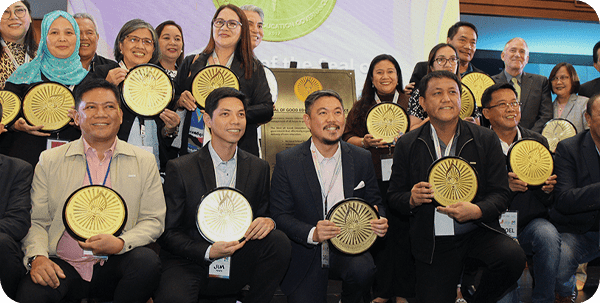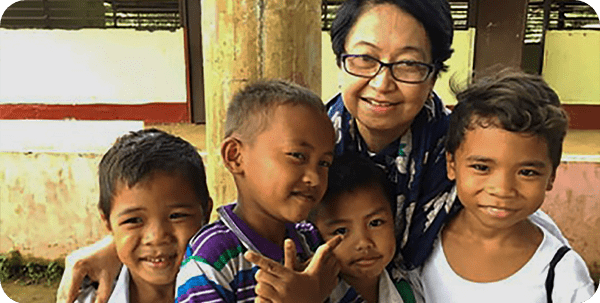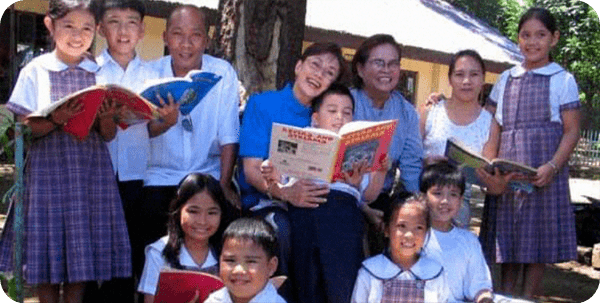The study is a persuasive case of how critical the Special Education Fund (SEF) is in the delivery of basic education in the Philippines. The 2018 SEF of P32.98 billion was 15% bigger than the Maintenance and Operating Expenditures (MOOE) that were given to schools by the national government (P28.6 billion). On a per capita basis, the SEF of eight (8) Regions was bigger than the per capita MOOE that the Regions received.
Tag: #educationgovernance
Love and Governance, the Synergeia Way
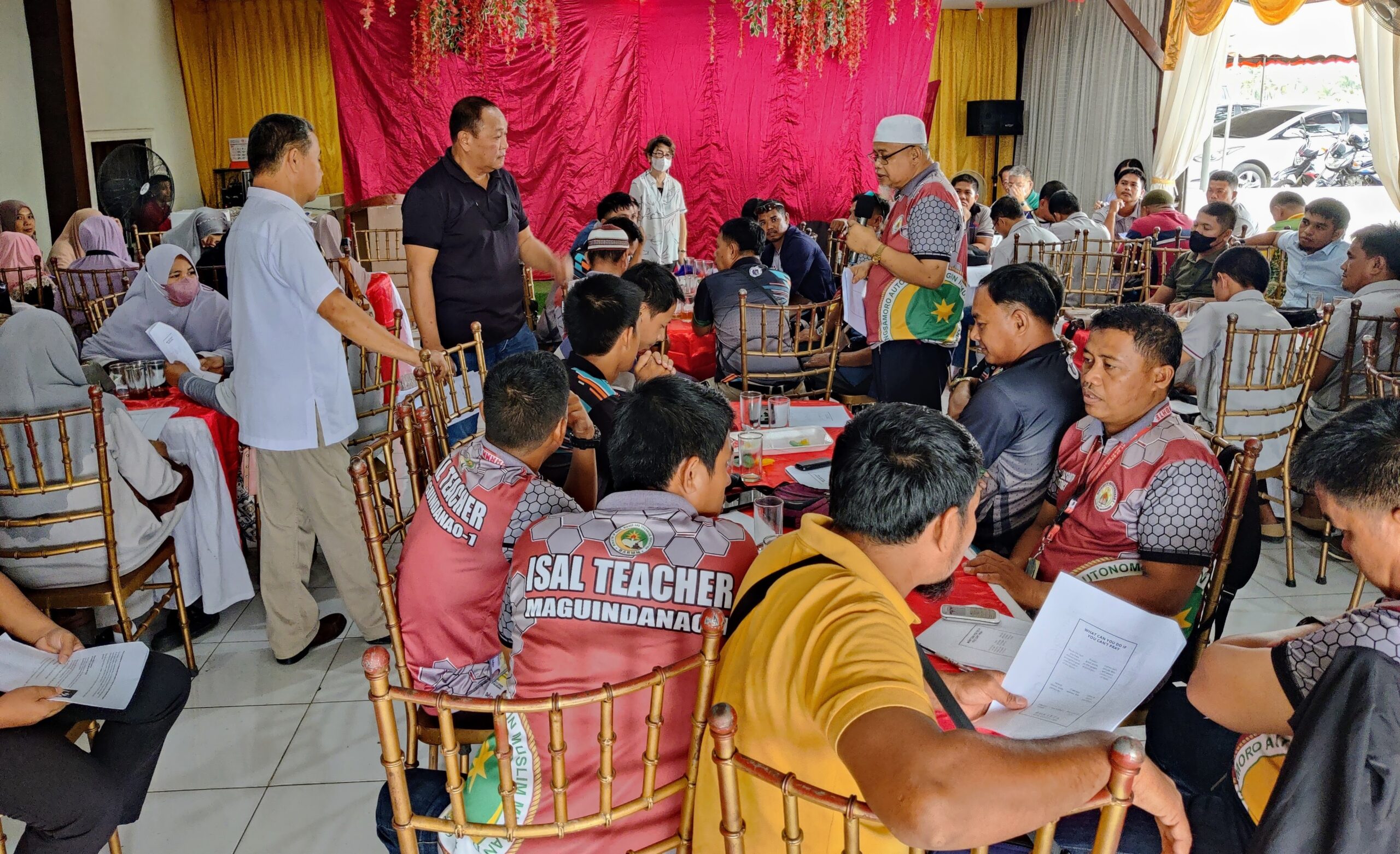
by Rene Pizarro
I have always been cynical of local leaders who impress me negatively about the way they work and how politics, power and greed invariably fill their cup of governance.
My expectations were a bit shattered when I joined the recent training workshop activities of Synergeia in the BARMM area in Mindanao.
I felt there is something different and unique with the mayors of these varied communities, who proudly identify themselves as “Synergeia” mayors, working for the betterment of education of their children, the hope of the future.
What makes them different?
They are visionaries who see the value of education as the key to poverty eradication and improvement in the quality of life of Filipinos.
They are game changers who are not afraid to be at the center of change and innovation.
They are always present in the affairs of their community, giving more time and offering themselves as mentors, stewards, guardians and inspiration to their people.
They have big hearts which, with authenticity and genuineness, allow them to feel and emphatize with the needs of their communities and invest in the kind of emotional currency, that has a specific love language attached to it, which make them do more and be more for their constituents.
What is their language of love?
In Synergeia’s culture of creating communities of mission and action, I have observed a love language that resonates within its universe of local leaders and partners. It also effectively communicates its bonds with the concept of good governance which Synergeia is relentlessly influencing more mayors to believe in its possibilities and raising local capabilities for it.
In Gary Chapman’s book, he cited five love languages which refer to the five simple ways that we want love to be shown to us and the ways that we show others love.
These are: 1. Words of affirmation, 2. Acts of Service, 3. Gifts, 4. Quality time, and 5. Physical touch.
I saw how these mayors expressed and manifested the second language of Love, Acts of Service, to their children, teachers, parents, and other community partners.
I sensed that for these mayors, their relationship with their people is nurtured and flourished by these Acts of Service, which is essentially a Synergeia brand of love.
I listened to their conversations about how to shape and reshape education, pushing reading at the forefront of learning and boosting the power of Local School Boards and School Governing Councils to effect reforms and affect change in the mindset and behavior of their communities.
They are long-term thinkers who are committed to action and who are not afraid to be vulnerable in the face of their people.
There was this young Mayor of Balindong, who bravely taught reading to his teachers.
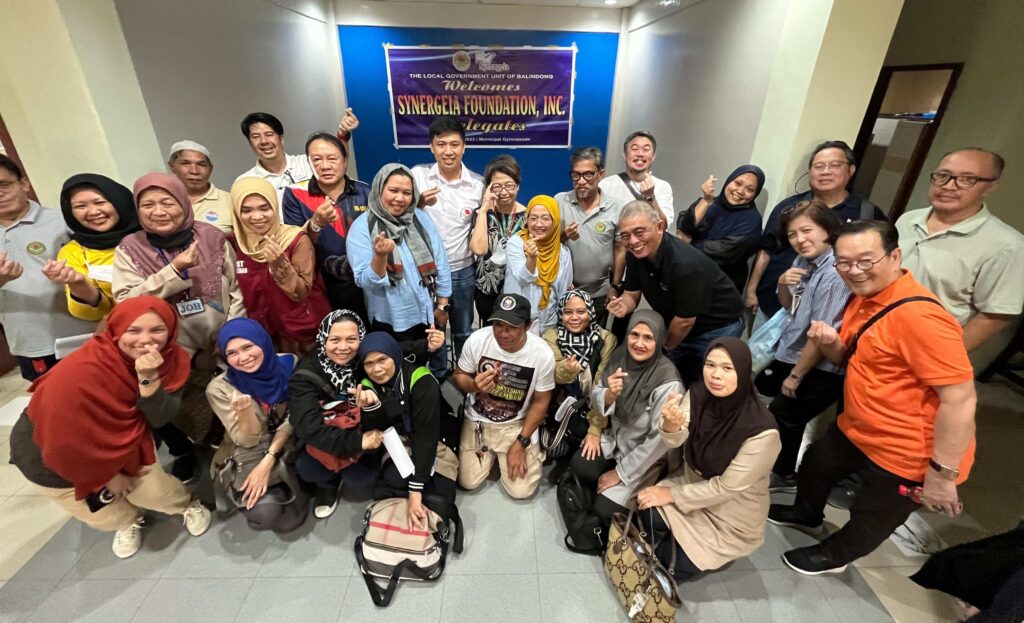
Another example is that of Mayor Abubakar “Toy” Paglas of Datu Paglas who brought his Madaris teachers to new ways of educating children about peace and values.
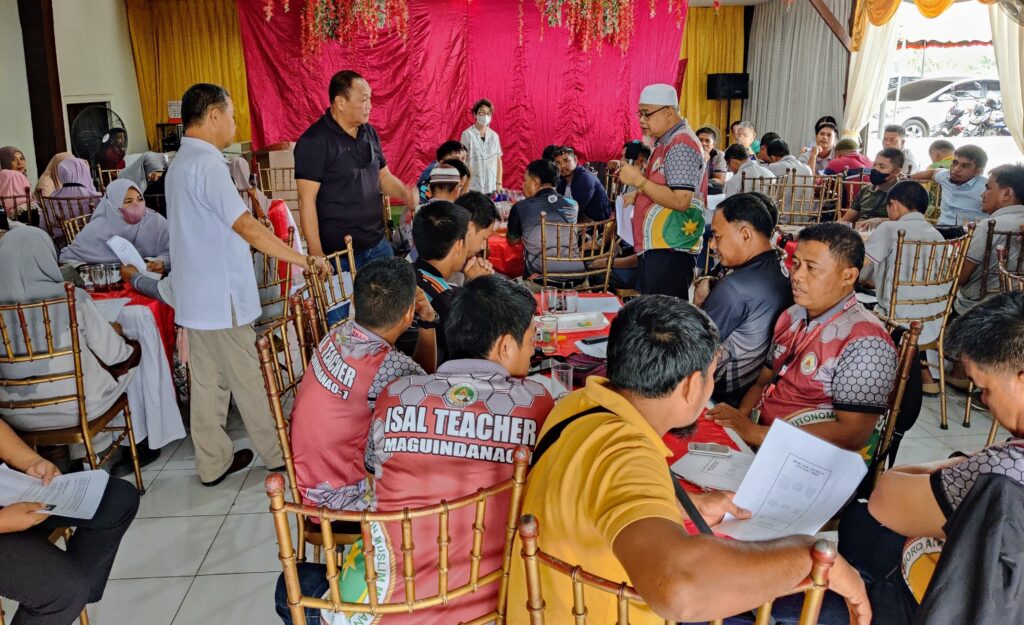
And a woman Mayor of Buldon who wears education like her second skin, boldly saving a day for multiple capacity building activities on reading, peace-building and policy reforms.
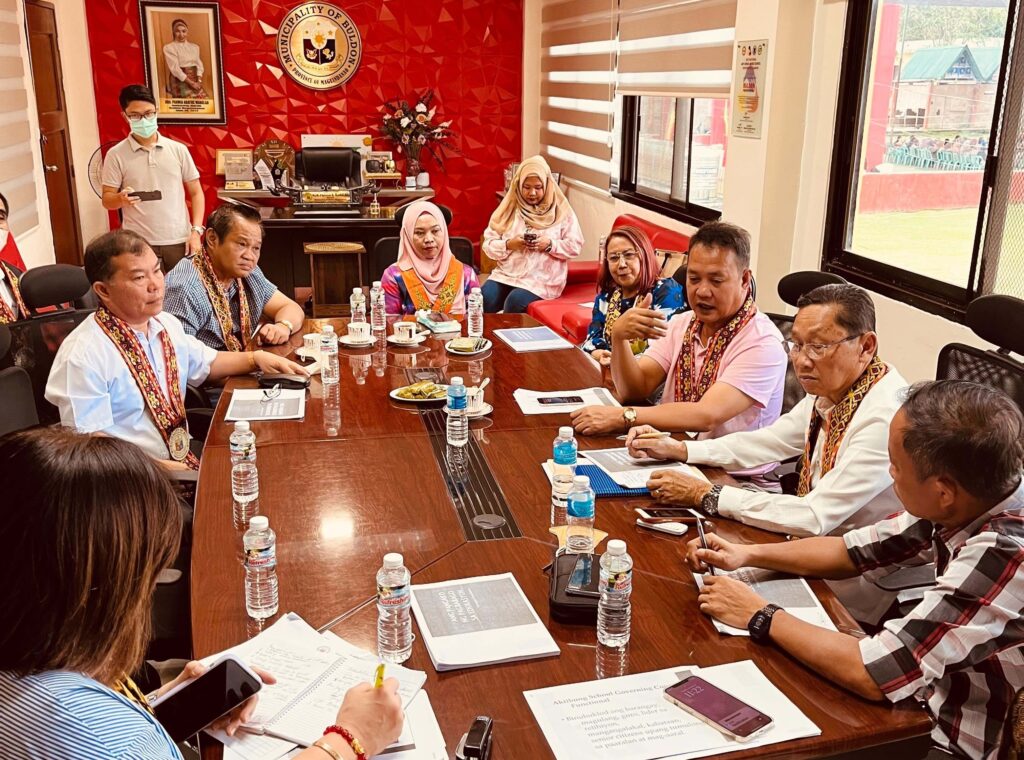
The validity of a love language in governance is real.
I discovered governance is beyond programs or projects, platforms or advocacies.
In education governance, most especially, it is important to learn the love language communities will identify with, apply and optimize it to keep relationships with communities alive and empowered to facilitate change and sustain positive outcomes.
With love, Synergeia and its local leader partners can indeed do almost anything to make a difference in education.
“Teaching Creative and Critical Thinking”
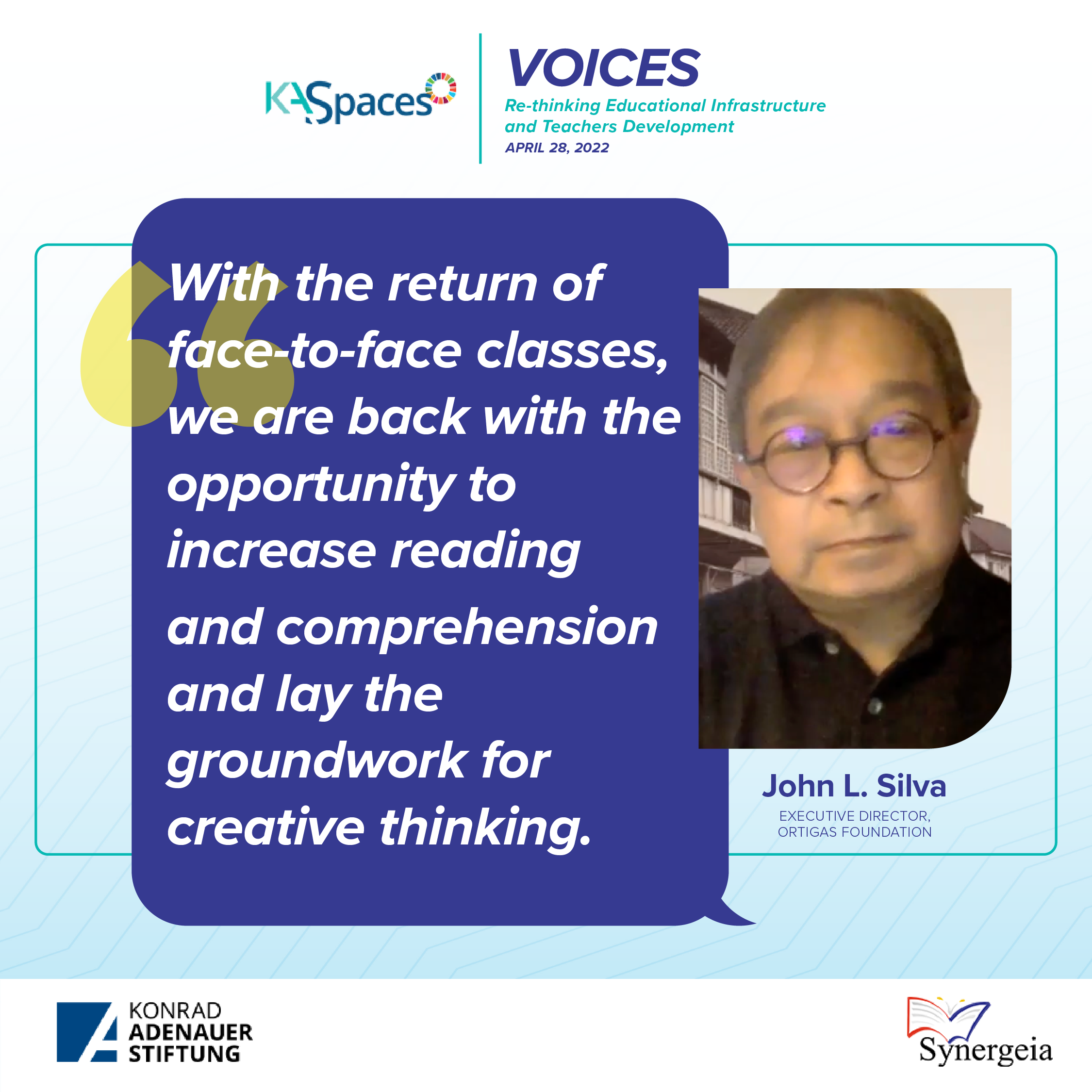
KASpaces: Rethinking Educational Infrastructure and Teacher Development
April 28, 2022
Oftentimes in educational conferences in the Philippines and abroad, I am drawn to discussions on inventive ways to get students to learn; how to make them think creatively, how to develop inquiry in their minds, and develop opinions, critiques, and a highly developed appreciation of the things around them, instead of just pushing the “Like” button.
For over half a century, I have taught and lectured teachers and students and, more recently, under the auspices of our educational organization, Synergeia. Every time I am in front of an audience, I test reactions to what I say or project onscreen. I look for what engages an audience, what makes them linger in my phrases, what makes an impact in the way I juxtapose sentences or pause for effect.
Teaching creativity in the advanced world oftentimes means having each student or teacher in front of a computer screen learning the most creative app with often colorful and cheerful greetings. Oftentimes, the presentation is fast-clipped, reflective of the fast pacing of their society. It is assumed that each participant has a level of technical savvy to be at a screen not aided and can fix any glitch when it happens. Any teacher will be enthused to add to one’s teaching arsenal how to get students to be engaged.
But I come from the Philippines and poverty rears its obstructive head at any attempt to improve creative learning. For example, in a recent Zoom class that I had with a class on improving English grammar about 100 kilometers north of Manila, where I am, the class has selected students who showed high interest in the selected subjects and had access or ownership to a cell phone, which would be their video screens for the next hour. That lessened the class to half, or a total of 20 students. The attendance number would later decline throughout the hour. There were brownouts, or electric stoppage, which cancelled the participation of four or five students Then there was the matter of weak signals. Students connected intermittently and when they decided to find a steady signal, they resorted to climb a tree or run up the side of a mountain to secure a signal. When, finally, the remainder of the students made it so far, connected, there were issues of self-confidence and inability to speak with confidence. They needed goading and eventually responded and interacted. But that was only with 15 minutes left. Clearly, any sort of modern act of inclusion in creative teaching will hardly work in the Philippine setting. Let me therefore share with you what I do in an underdeveloped country without the accoutrements of creating the impossible.
First, I welcome the return of face-to-face teaching. I welcome that because of the very faulty Zoom teaching and the failed modules that were distributed throughout the country, in lieu of a teacher’s absence.
Next, I welcome the return of teachers renewing basic reading lessons The pandemic has significantly decreased the reading and comprehension skills of students. If the national scores before the pandemic showed students behind, it has been exacerbated by the pandemic and the accompanying school disruption. With the return of face-to-face classes, we are back with the opportunity to increase reading and comprehension and, in like manner, lay the groundwork for creative thinking. I will share with you some low-tech but effective teaching methods that I’ve used to spawn creative thinking and inquiry. These methods include using visuals employing storytelling establish a reading mandate, accessibility to libraries, proving art materials, and visiting museums. I
In the area of visuals in a few weeks I will have an exhibition of my organization’s library, the Ortigas Library, an exhibition of 100 vintage photographs of the tribal people of the Mountain Province in the North. It will be in a high school in a small town known for having graduated high achieving students. The principal welcomed the exhibition, stating that test scores of her students have plummeted again due to the pandemic, and she needed another way to reach the students who have been without a schooling discipline and schedule. She believes the never-seen photographs of the students’ ancestors in their native dress, events, and local architecture that they no longer see will be a revelation to their identity and ignite a learning moment.
Storytelling. Teachers have been taught to develop an authoritarian reserve in their teaching. That, to me, is a prescription to failure. I have been successful communicating to students when I relate a personal story or insight. Personal storytelling decreases the unequal relationship between students and teachers, an informal manner of relating events and people, especially if they mirror the experiences of the students, are the wedges to securing access to the student’s mind.
A reading mandate. To be creative and to have an opinion means to have read much to reach such a level. Reading and the corresponding comprehension scores in the country are abysmal. If in the past, the level of television watching exceeded study and school time hours, now there is additional video gaming and mindless watching that wipes out the hours for potential reading.
I have been quite strict on a reading mandate. Whenever I go around the provinces, I just impose. I just tell the teachers there shall be no video and TV watching for the whole school week and watching is only allowed on weekends after homework is completed and for a few hours. My Draconian law is hard to implement, given the supervision parents and teachers have to do. But what has to be impressed is there must be reading time for at least a half hour each day. A book to read and later to report are also compulsory. Reading regains the flow of time in imbibing words in sentence and paragraph constructions, and, most importantly, in understanding the import of the author’s overall message. Reading has no abrupt ending like TikTok, as it leads a reader through stories that may have taken several days to finish reading. A student’s mind is rewired from the immediacy offered by video to a steady, more realistic pace of digesting the written text and making sense of it. Likewise, with TV’s dulling powers, reading has an engaging quality, raising questions and even greater thought and rumination on the matter.
Access to libraries. Libraries are under-utilized in my country. There are city and school libraries that are mostly free to enter and use. There are a fair number of libraries throughout the country and, unfortunately, much of the reading fare in them are dated. Nonetheless, there are good reading books still and there are current newspapers and magazines to read. Students must be acquainted with libraries as a place for reading and as a place for solace. In recent times, libraries, like the Ortigas Library, which I work in, have been visited to borrow books and documents that straighten and clarify the flurry of false news now besetting us.
Access to museums. The treasures in museums are undoubtedly a way to stimulate creative and critical thinking. Not all student visitors get that experience. The ways of a child’s socialization at home or at school affect the way stimuli is received as in a visit to a museum. A visit, nonetheless, is a departure from a normal day, allowing students to gaze at master artworks or ancient artifacts, spurring thought to wander and reflect. The mind is most supple to receiving wider dimensions of creative and critical thinking in a museum setting.
Lastly, access to art supplies. Art therapy has been used successfully in drawing and drawing out emotional expressions in children affected by external factors, such as war. So it is to devote time in school or at home sharing coloring pencils, paint brushes, and paper. This is a new world of communication for the student other than the written text. It stimulates students and, for some, it may lead a path to an artistic streak or vocation in the future.
For underdeveloped countries like the Philippines with a failed educational system, these low-tech methods of developing creative and critical thinking still manage to stimulate students in that direction
Lastly, the steep learning decline in students…. distributing modules in lieu of teachers’ absence, the faulty learning through cell phones and screens affected by no signals or weak signals have been a severe setback for education in the Philippines. We are ever more aware now that face-to-face teaching led by a well-trained dedicated corps of teachers and, mind you, parents, are the only and most effective way to spark the genius inherent in each student.
John Silva
Executive Director, Ortigas Foundation
